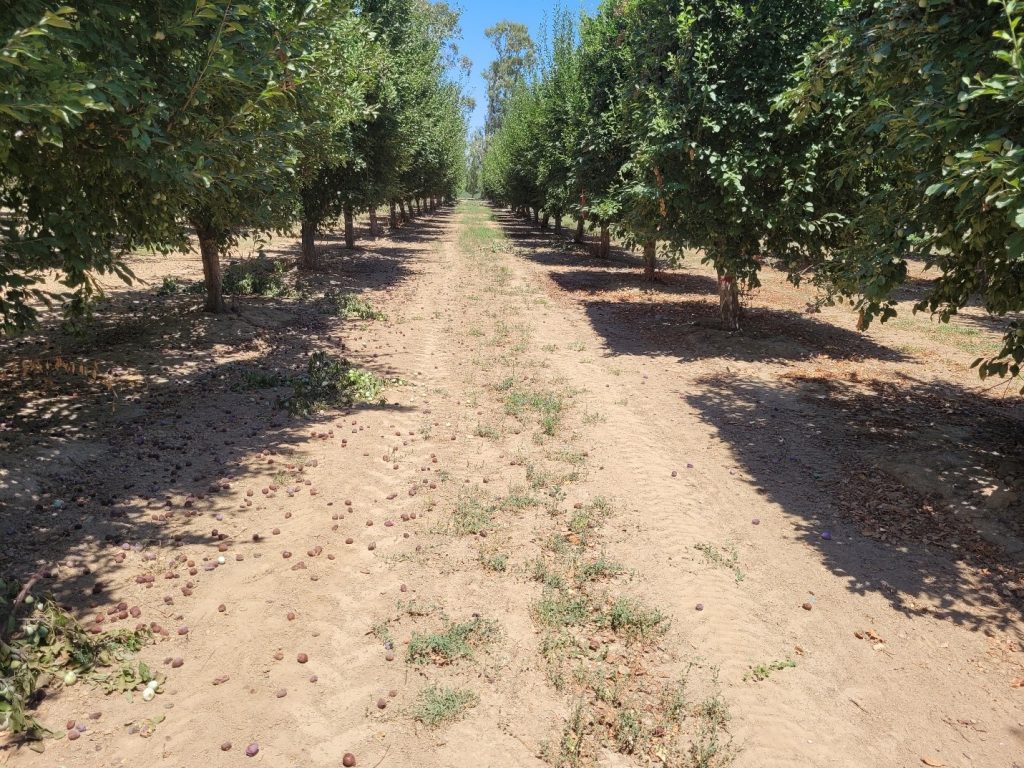Becky Wheeler-Dykes, Orchard Researcher, CSU Chico
Dr. Rich Rosecrance, Professor, College of Agriculture, CSU Chico

Photo 1. Comparison of sunburn in trees mechanically hedged on two sides in the spring (left) versus trees mechanically hedged on 4 sides in the spring (right).
Sunburn is a common phenomenon in Sacramento Valley prune orchards, and losses are typically minimal in otherwise healthy trees. However, many growers are seeing greater than usual losses in 2021 after sudden heat events in late May and mid-June. Sunburn damage is most commonly seen on fruit in high light environments in the canopy (higher in the canopy, on the south side of the tree, or on the outside of the canopy) particularly after unusually high temperatures.
Several horticultural strategies can mitigate crop losses from sunburn. Careful irrigation management to maintain good soil moisture allows trees to maximize evapotranspiration, cooling the leaves and fruit. Groundcover on the orchard floor helps cool the orchard environment with the added benefit of reducing light reflection from the ground into the canopy. Adequate nutrient management, potassium in particular, encourages vegetative growth in the canopy that will provide fruit with protection from direct sun in the summer months.
In a trial of mechanical hedging treatments in Red Bluff, boxed trees (hedged on all four sides of the tree and topped at 13 feet) in the spring have less sunburn than the control hand-pruned trees (can you include a figure?). Possible mechanisms for less sunburn the boxed trees include:
- Boxed trees are smaller than the hand pruned trees, requiring less water, and therefore may have suffered less water stress than the control trees
- Boxing produces an upright prune tree with many short shoots that do not typically bend as the fruit matures. Branch bending as fruit weight increases can expose fruit to high temperature and light environments that fruits were not acclimated to, leading to increased sunburn. This phenomena has previously been reported in apples
We will evaluate whether the higher sunburn levels significantly reduced marketable yield in the hand pruned trees compared to the boxed trees at harvest. In the last two years, however, there has been no clear yield difference between the different pruning treatments. As we see summers with more days of extreme temperatures, the potential benefits of mechanical hedging may provide a new tool for growers in the fight against increasing sunburn losses.
This article was adapted from “Blue Prune Drop and Leaf Scorch” by Bill Krueger and Richard Buchner UCCE Farm Advisors-Emeritus.
You can learn more about the mechanical hedging study in Red Bluff, including the potential cost savings and results through 2020.


Leave a Reply